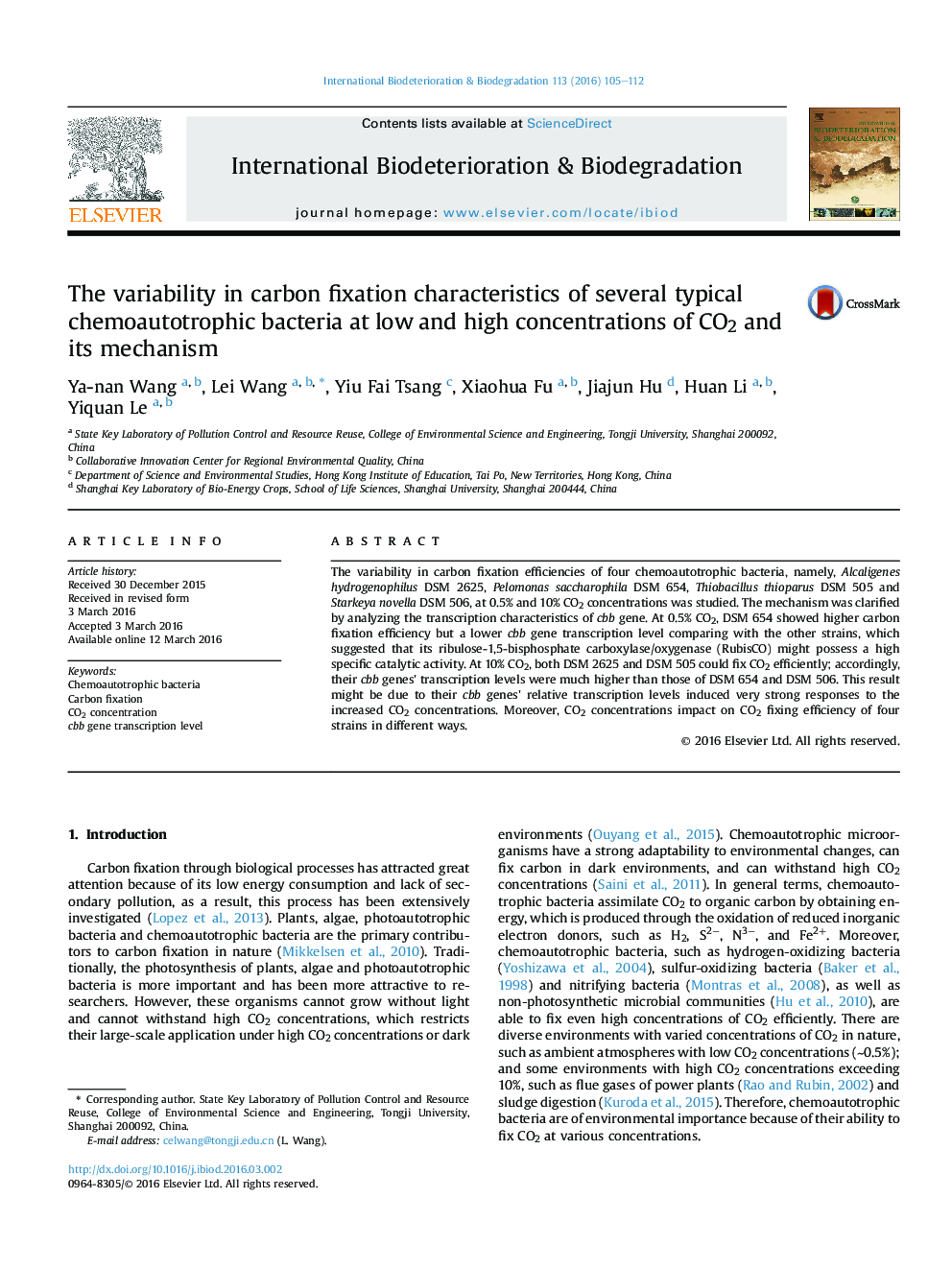| کد مقاله | کد نشریه | سال انتشار | مقاله انگلیسی | نسخه تمام متن |
|---|---|---|---|---|
| 4364075 | 1616304 | 2016 | 8 صفحه PDF | دانلود رایگان |

• The CO2 fixing capabilities of four strains significantly differ at 0.5% and 10% CO2.
• Cbb transcription level and RubisCO specific catalytic activity affect CO2 fixation.
• CO2 concentrations impact on CO2 fixing efficiency of four strains in different ways.
The variability in carbon fixation efficiencies of four chemoautotrophic bacteria, namely, Alcaligenes hydrogenophilus DSM 2625, Pelomonas saccharophila DSM 654, Thiobacillus thioparus DSM 505 and Starkeya novella DSM 506, at 0.5% and 10% CO2 concentrations was studied. The mechanism was clarified by analyzing the transcription characteristics of cbb gene. At 0.5% CO2, DSM 654 showed higher carbon fixation efficiency but a lower cbb gene transcription level comparing with the other strains, which suggested that its ribulose-1,5-bisphosphate carboxylase/oxygenase (RubisCO) might possess a high specific catalytic activity. At 10% CO2, both DSM 2625 and DSM 505 could fix CO2 efficiently; accordingly, their cbb genes' transcription levels were much higher than those of DSM 654 and DSM 506. This result might be due to their cbb genes' relative transcription levels induced very strong responses to the increased CO2 concentrations. Moreover, CO2 concentrations impact on CO2 fixing efficiency of four strains in different ways.
Journal: International Biodeterioration & Biodegradation - Volume 113, September 2016, Pages 105–112